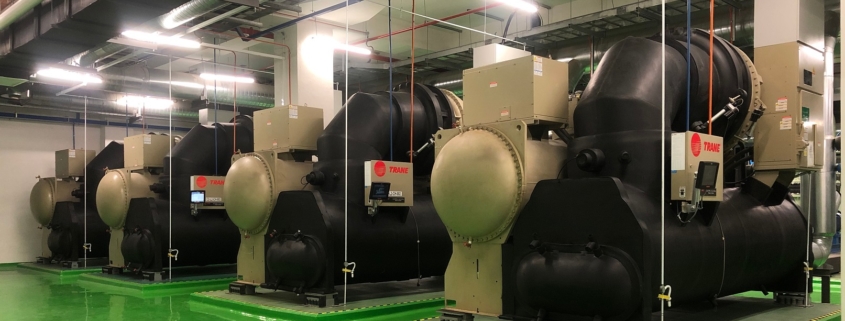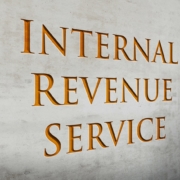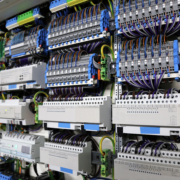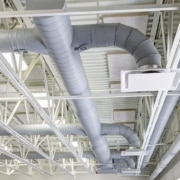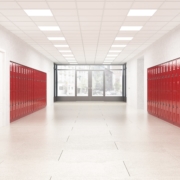Case Study 5 of 8: Qualifying as a designer of energy-efficient properties
Case Study 5 of 8: Qualifying as a designer of energy-efficient properties
Construction contractors and designers are very interested in requesting the IRC §179D deduction from owners of qualifying energy efficient commercial building properties (EECP). This tax deduction, which was initially part of the Energy Policy Act of 2005, has become permanent and updated through the passage of the Inflation Reduction Act of 2022.
As IRC §179D regulations have not been published, there remains some confusion as to whether specific parties can make a justified claim for this deduction. Erroneous §179D claims have been made, resulting in audits, challenges, and penalties. To help clarify this situation, the IRS has released several factual scenarios. In our continued series of blog posts, we are providing an in-depth look at each scenario covered in IRS Memorandum AM 2018-005 with further analysis. Our fifth blog post in this series piggybacks onto the discussion of our most recent blog post, which looked at scenario four in the IRS memorandum.
The qualifying term “designer” continues to be challenging, though it is clear in the code what tasks qualify as design work. In Section 3.02 of the Notice defines the “Designer” of a government-owned building as follows:
A designer is a person that creates the technical specifications for installation of energy efficient commercial building property (or partially qualifying commercial building property for which a
deduction is allowed under § 179D). A designer may include, for example, an architect, engineer, contractor, environmental consultant or energy services provider who creates the technical specifications for a new building or an addition to an existing building that incorporates energy efficient commercial building property (or partially qualifying commercial building property for which a deduction is allowed under § 179D). A person that merely installs, repairs, or maintains the property is not a designer.
To review the fourth scenario, a government building owner has decided to replace the HVAC/HW system on an existing building. In this instance, the owner solicited Design-Bid-Build contracts from two specific entities: an engineer and a contractor.
As part of the first contract, the engineer performed an evaluation of the existing HVAC/HW system. As part of the contracted work, the engineer determined that the existing chillers and roof-top units required replacement and new HVAC/HW system controls were needed. The engineer also designed new portions of the system under this contract, creating sealed design drawings and specifications that included the location, type, and size of chillers, roof-top units, and system controls. As the engineer created sealed drawings, the firm took legal responsibility for the design work performed.
The government building owner then took the completed design drawings and specifications to form the basis of a second contract with a second entity. As the design work was complete, this contract was for installation of the designed items by a contractor, a separate entity from the original engineering firm.
After completing the HVAC/HW system per the supplied drawings and specifications, the contractor asked for and received the full §179D deduction related to the HVAC/HW system installation.
In scenario five, the IRS bulletin assumes the same facts as scenario four but changes one element: the contracted engineer did not produce sealed drawings showing the location of the new chillers, roof top units, and HVAC/HW system specification. But the second contractor used those drawings and a subcontractor to install the required HVAC/HW system controls. Once the contracted construction was complete, the second contractor provided sealed drawings showing the as-built location, type, and size of the chillers and roof-top units for the HVAC/HW system.
In this scenario, both the engineer and the subcontractor were allocated a portion of the §179D deduction – which is acceptable, and the building owner has the right to do – but the question remains: does the contractor now qualify?
The answer remains no. In the second contract, the subcontractor merely installed the HVAC/HW system controls to the engineer’s specifications before provided the sealed drawings.
In this scenario, it would be correct for the building owner to allocation a portion of the §179D deduction to the engineer as design services were provided through that contract. But since the second contractor, as well as its subcontractor, did not provide design services, allocating a portion of the §179D would be in error.
The contractor who installed the HVAC/HW system did not design it. Additionally, in scenario four, the contractor had no legal obligations under the Design-Bid-Build contract to provide professional design services to create the contract documents. The second contract did not include any design services, rather it was only for installation services.
Although section 3.03 of the Notice gives the government builder owner discretion to allocate the §179D deduction among several qualified entities that provide design work, it does not give the government building owner discretion to allocate the deduction – whole or in part – to a person or entity that did not design the EECBP in question. The IRS indicates that the requested allocation be disallowed.
David Diaz is a partner at Walker Reid Strategies, a licensed professional engineering firm specializing in performing §179D studies and §45L certifications. Mr. Diaz is an expert in energy efficiency and specialty tax services who shares his insights at www.walkerreid.com and online through webinars. For more information, contact him at ddiaz@walkerreid.com.

